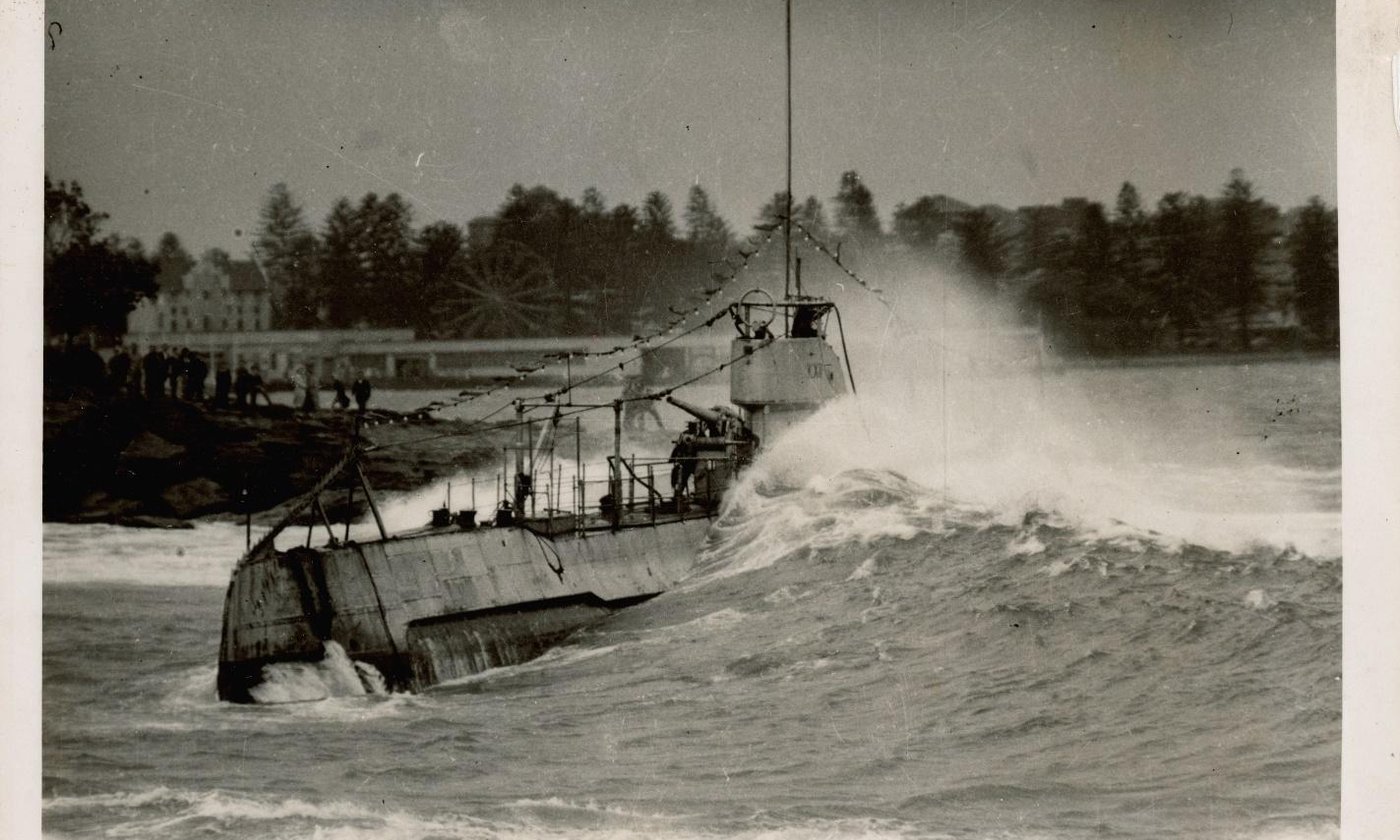K Class
HMAS K9

Image provided by Royal Australian Navy
HMAS K9 Aground near Seal Rocks
HMNlS KIX was commissioned into the Royal Netherlands Navy in June 1923 and deployed to the Netherlands East Indies to be based at Surabaya from June 1924. After a patrol against Japanese forces in the Gulf of Thailand in February and March 1942, KIX deployed to Fremantle arriving on 13 March. KIX was in very poor material shape and was offered to the RAN to support anti-submarine warfare (ASW) training. The RNlN offer was accepted on 30 April, and the submarine renamed HMAS K9. K9 deployed to Sydney arriving on 12 May, where it was berthed alongside the accommodation ferry, HMAS Kuttabul at Garden Island. 19 days later on the night of 31 May / 1 June, the Japanese conducted their midget submarine attack in Sydney Harbour. Kuttabul was sunk by a Japanese torpedo with the loss of 21 lives. The Officer of the Day in K9 was injured in the explosion, but his prompt action saved the submarine.
K9 never recovered, although attempts were made to bring the submarine back into service throughout 1942 to the end of 1944. Finally (in May 1945) it was to be towed from Sydney back to the (then) Netherlands East Indies, however, fate struck again and the submarine broke its two and grounded on 7 June 1945 in the vicinity of Seal Rocks, on the central coast of New South Wales (3 miles WSW of Sugar Loaf Point)
The history of the ill-fated HMAS K9 is one of perilous escapes, collateral damage, costly repairs, idle time and ultimate de-commissioning after a total of just 31 days at sea in the service of Australia.
The vessel was originally ordered in 1917, launched in 1922 and commissioned into the Royal Netherlands Navy in 1923 as Dutch submarine K IX. She was based in the Netherlands East Indies from May 1924.
By the outbreak of the Pacific War seven years later, K IX was out of commission but was returned to active service in March 1942. Following the fall of the Netherlands East Indies, K IX managed to escape to Fremantle, Western Australia, arriving in March 1942.
The Dutch government offered the vessel to the Royal Australian Navy for use in anti-submarine warfare training. The offer was gratefully accepted. But the submarine's long string of ill fortune was just beginning.
By May 1942, K IX had arrived in Sydney, but it was badly in need of repairs. Then on 1 June, she was lying in Sydney Harbour alongside HMAS Kuttabul when Japanese midget submarines attacked. During the night a Japanese torpedo passed under K IX and exploded when it struck the harbour bed beneath Kuttabul, sinking the ex-ferry at a cost of 21 lives.
K IX was also significantly damaged and was decommissioned from the Royal Netherlands Navy. Extensive repairs followed and the vessel was commissioned into the Royal Australian Navy as HMAS K9 in June 1943.
But because of its poor mechanical condition HMAS K9 saw little service with the RAN and spent most of her time under repair; an expensive liability.
In 1944, K9 was badly damaged again by a battery explosion. Due to a lack of spare parts the submarine was decommissioned from the RAN the same year.
Ironically, K9 then re-entered Dutch service as an oil lighter. But in one final misadventure she was washed ashore near Seal Rocks, New South Wales in June 1945 while under tow and subsequently stripped for scrap.
The 64.5-metre-long wreck was eventually located in 1999 by the New South Wales Government's Heritage Office. The stretch of coast on which K9 grounded is now known as Submarine Beach in her honour. The same area had proved treacherous at least once before. It was originally known as Fiona Beach following the loss of the iron steamer Fiona in 1882. That wreck site lies just 3km south of K9.